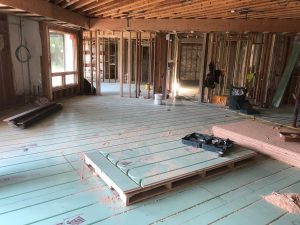We stand with Black Lives Matter, though just a statement is not nearly enough. SHAC is committed to incorporating the fight against systemic racism and inequality into the fabric of our organization. We aim to (i) ensure that our projects fully consider their social impacts by addressing housing insecurity in the Bay Area, (ii) raise awareness on the absence and inaccess of technology in many low-income communities, and (iii) continue our coordination with local governments, non-profits, and homeless shelters, as housing construction should be place-specific and community-driven. These methods have always stood at the forefront of the THIMBY and Solar Decathlon missions (now SHAC), as they are inextricable from the success and sustainability of affordable housing and environmental justice measures.
Angela Davis writes in Freedom is a Constant Struggle: “it is essential to resist the depiction of history as the work of heroic individuals in order for people today to recognize their potential agency as a part of an ever-expanding community of struggle.” As students, we recognize that there are several spheres of influence in which we can drive change. At home, we can have hard conversations with friends and family, diversify our circles and media sources, and foster ongoing learning and growth. At work, we can foster inclusivity and combat microaggressions to foster a diverse and equitable workplace. With our wallets, we can make donations to community organizations and support local Black-owned businesses to help close the racial wealth gap. We can hold businesses and brands accountable, asking them to increase representation in their marketing and diversity in their staff, as well as call out companies that are capitalizing on the BLM movement. On a governmental level, we can lobby—through call, text, and email—local, state, and national representatives, as well as sign petitions. At school, we can demand POC-focused classes and call for a diverse teaching staff. In our student groups, we can target outreach efforts to traditionally underrepresented student populations.
Of course, all these proclamations are empty without the backing of decisive and persistent action. As students focused on sustainable housing and green building, we have taken the time to listen to and learn about the Black experience in the spheres of environmental justice, redlining and housing segregations, and the many other ways in which structural racism manifests in the built environment. In solidarity with the Black Lives Matter movement, we will be beginning a series of blog posts amplifying Black voices to educate ourselves and our larger community on these topics. Within our projects, we have adopted a team structure that dedicates members for researching the socio-political context of our work in order to imbue the underlying narrative of each house with an intense awareness of the low-income and marginalized communities that are the most impacted by the housing crisis and climate change. We will continue to promote a culture of inclusivity within our club and ensure that the fight against inequality is at the forefront of our work.
Please check out the following resources
—
Sources
Freedom is a Constant Struggle: Ferguson, Palestine, and the Foundation of a Movement by Angela Davis, 2016.




